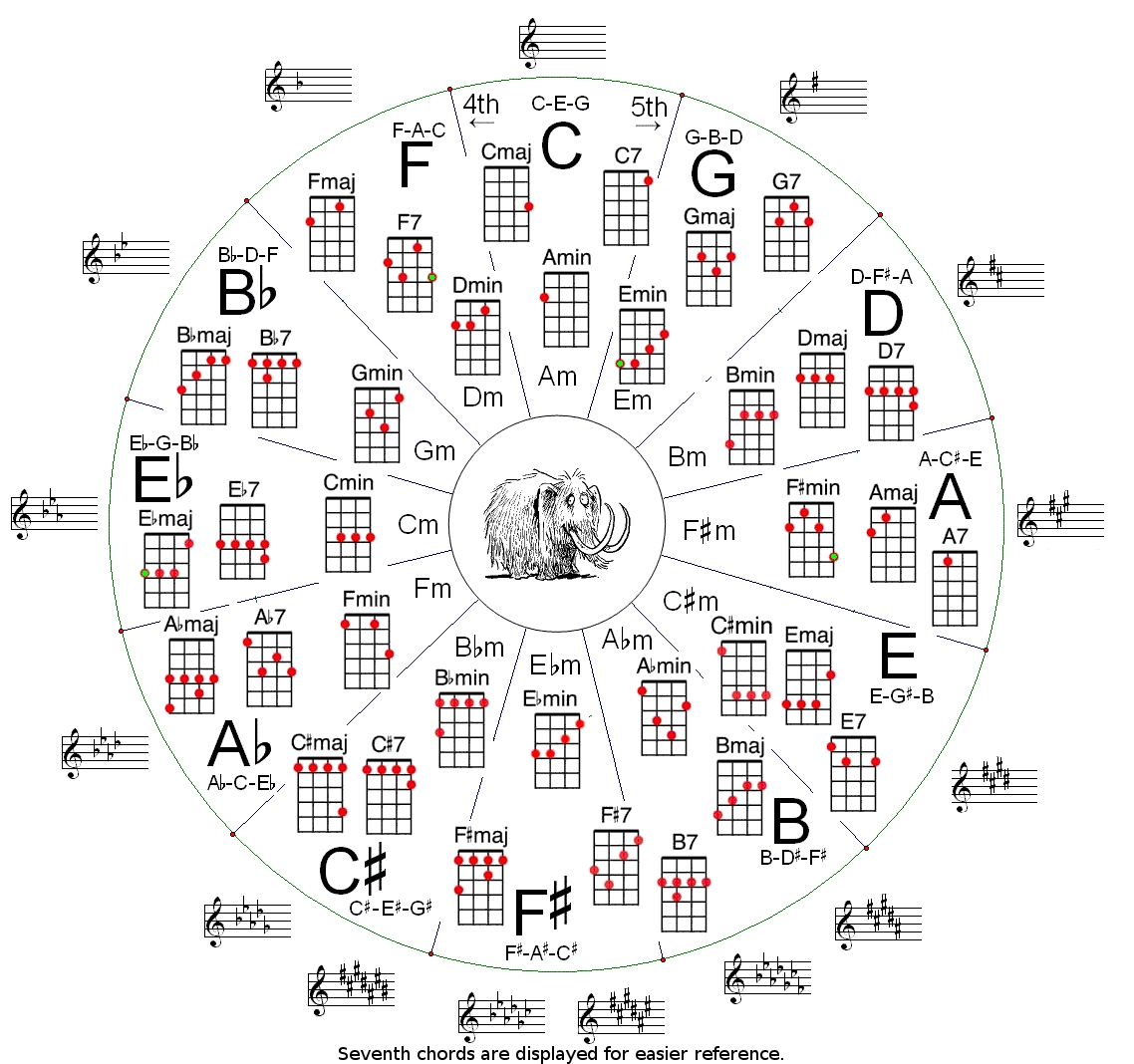I made the table for learning purpose. I hope you find it useful, or let me know if there are any mistakes.
Baritone is EBGD tuning, Low G is AECG tuning, which G is Low G.
The conversion means, assume we have a score for Baritone, which includes both sheet music (the notes) and the tab (the fingers), if we want to convert the score to Low G, and keep the fingers same with Baritone, and only adjust the notes pitch and the key signature. It's similar to convert from Low G to Baritone. The purpose for such conversion is to make a tab works for both Baritone and Low G with the same fingering, and only adjust the sheet music.
For example, in Baritone, the 1st string (E string), 2nd fret, is F#, after converting to Low G, it's still the 1st string (A string) and 2nd fret, now the note is B. If the key signature in Baritone is F#, then the adjusted key signature should be B in Low G.
Hope my explanation makes sense.
In the table, the left column shows the key signature in Baritone, and the right column shows the corresponding key signature in Low G.
In each column, the first part before the two dashes is the tonic note name, the second part (after the two dashes) is the number of sharp/flat symbols for the key signature.
Table is below.
Baritone is EBGD tuning, Low G is AECG tuning, which G is Low G.
The conversion means, assume we have a score for Baritone, which includes both sheet music (the notes) and the tab (the fingers), if we want to convert the score to Low G, and keep the fingers same with Baritone, and only adjust the notes pitch and the key signature. It's similar to convert from Low G to Baritone. The purpose for such conversion is to make a tab works for both Baritone and Low G with the same fingering, and only adjust the sheet music.
For example, in Baritone, the 1st string (E string), 2nd fret, is F#, after converting to Low G, it's still the 1st string (A string) and 2nd fret, now the note is B. If the key signature in Baritone is F#, then the adjusted key signature should be B in Low G.
Hope my explanation makes sense.
In the table, the left column shows the key signature in Baritone, and the right column shows the corresponding key signature in Low G.
In each column, the first part before the two dashes is the tonic note name, the second part (after the two dashes) is the number of sharp/flat symbols for the key signature.
Table is below.
Code:
Baritone Low G
C F -- b
G -- # C
D -- ## G -- #
A -- ### D -- ##
E -- #### A -- ###
B -- ##### E -- ####
F# -- ###### B -- #####
C# -- ####### F# -- ######
F -- b Bb -- bb
Bb -- bb Eb -- bbb
Eb -- bbb Ab -- bbbb
Ab -- bbbb C# -- #######
Db -- bbbbb F# -- ######
Gb -- bbbbbb B -- #####
Cb -- bbbbbbb E -- ####
Last edited:

